
 |
Search
Affiliates
Catalog
Classifieds
Newsletter
MyJumpSpace |
|
Squats work your quads, hamstrings, calves, and trunk, all important areas for vertical jumping. The combination of strength training and plyometric training will give you the greatest increase in vertical jump. The prototypical 5'7" high-flyer who can slam dunk with a 50 inch vertical should be able to squat over 500 lbs - over 4 times his bodyweight. To maximize your jump training results you need to combine your strength training with Jumpsoles plyometric training. Combining both plyometric training and strength training in the same workout is referred to as Complex Training. continued below... |
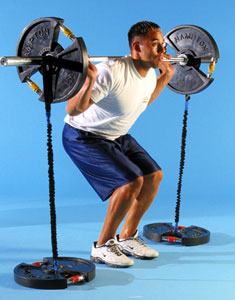 CHAIN KILLERS SSE Elastic Bands are great for jumpers knees squats |
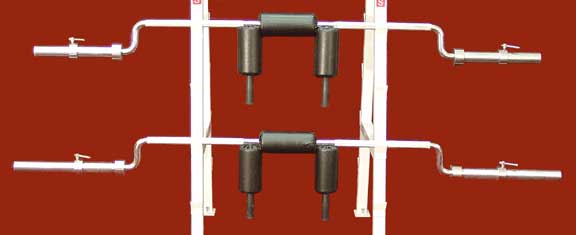 Safety Squat Bars Great for jumpers knees squats |
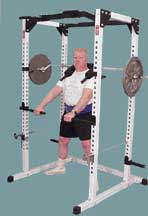 Power Rack System (not including bar) Use with safety squat bars to strengthen jumpers knees |
|
The Hypergravity Weight Belt Great to use with the Peterson Step-Ups for Jumpers Knees |
|
|
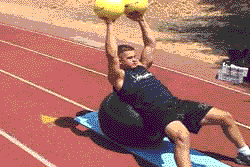 Double Grip Handle Balls Use the double grip handle balls to do jumpers knees squats |
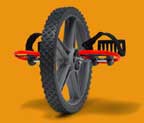
Addressing the Hamstring area |
 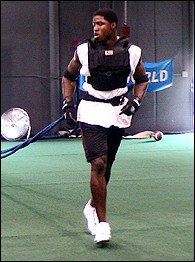 Xvest Weighted Vests Great to use with the Peterson Step-Ups for Jumpers Knees |
| continued
from above... How to do a Stationary Squat: Stand with your back to a barbell that is resting on a rack at shoulder height, lift the barbell to rest on your shoulders, bend at the hip and knees until your thighs are parllel to the floor, then return to starting position. Avoid excessive movement in your trunk and do not bounce. Be extremely careful what weight you squat. Start from 50% of your body weight and gradually increase from there. Find a weight where you are comfortable doing a set of 5, and increase in weight over the weeks. A great tool for doing squats in your own home is the Power Jumper, which can also be used to increase the resistance for each jump during plyometric training What do Experts Say about Squats? The National Strength and Conditioning Association is the leading researcher for athletics and fitness. They recently reviewed hundreds of studies on squats and found that squats do not hurt the knees and are safe, effective, and can even prevent injuries. They say it is important because it strengthens your lower body and trunk muscles, ligaments, tendons, and even your bones. Stationary Squats can be done in a gym on a machine, and Moving Squats outdoors with Jumpsoles. Weight Belts increase the effectiveness of various types of moving squats and can give you faster and better results. Here are some types of moving squats: [Beginner] The Split Squat Jump: Spread the feet far apart, front to back, and bend the front leg 90 degrees at the hip and 90 degrees at the knee. Jump up, using arms to help lift, and hold the split squat position. Land in the same position and immediately repeat the jump. [Advanced] The Moving Split Squat with Cycle: For 30 meters - Spread the feet apart, front to back, and bend the front leg 90 degrees. Jumping up and forward, switch legs. As you bring the back leg through, try to touch the buttock. Land in the split-squat position and immediately do another cycle. Each push propels the body forward. These exercises and more can be found in the classic book Jumping Into Plyometrics by Dr. Donald Chu |